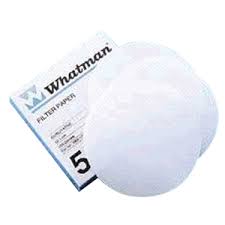cellulose filters are used in qualitative analytical techniques to determine and identify materials.
Prepleated qualitative filters are available, which give improved flow rate and increased loading capacity compared to equivalent flat filters.
10 in stock
Grade 5: 2.5 μm*
The maximum degree of fine particle filtration in the qualitative range.
Capable of retaining the fine precipitates encountered in chemical analysis.
Slow flow rate.
Excellent clarifying filter for cloudy suspensions and for water and soil analysis.
Also available prepleated as Grade 5V.
Rs.1,507.50 – Rs.5,092.50
cellulose filters are used in qualitative analytical techniques to determine and identify materials.
Prepleated qualitative filters are available, which give improved flow rate and increased loading capacity compared to equivalent flat filters.
| Variation Codes | 1005-090, 1005-110, 1005-125, 1005-185 |
|---|
Extremely fast filtering with excellent retention of coarse particles and gelatinous
precipitates such as ferric hydroxide and aluminum hydroxide.
Very useful as a rapid filter for routine clean-up of biological fluids or organic extracts during analysis.
Used when high flow rates in air pollution monitoring are required and the collection of fine particles is not critical.
Available prepleated as Grade 4V.
Nuclepore track-etched polycarbonate membranes are manufactured from high-quality polycarbonate film and have sharply defined pore sizes, high flow rates, and excellent chemical and thermal resistance.
The membranes have a smooth flat surface and exhibit very low levels of extractables.
Whatman chromatography paper media are made from specially selected cotton cellulose.
They are rigorously quality controlled for characteristics important to the chromatographer and to ensure uniformity within
the grade.
Features and benefits
• Pure cellulose produced entirely from the highest quality cotton linters
with no additives of any kind
• Manufactured and tested specifically for chromatographic techniques –
this ensures the wicking capability and uniformity of capillary action that
are important in chemical separations
• Also widely used in protein and nucleic acid blotting
Slightly more retentive than Grade 1 with a corresponding increase in filtration time (i.e., slightly slower filtration speed).
More absorbent than Grade 1. In addition to general filtration in the 8 μm particle size range, the extra absorbency is utilized, for example, to hold soil nutrient in plant growth trials.
Also used for monitoring specific contaminants in the atmosphere and in soil testing.

There are no reviews yet.